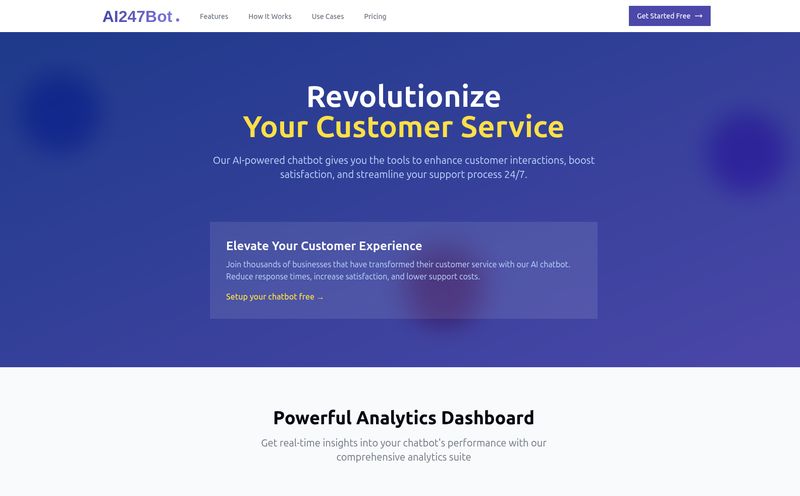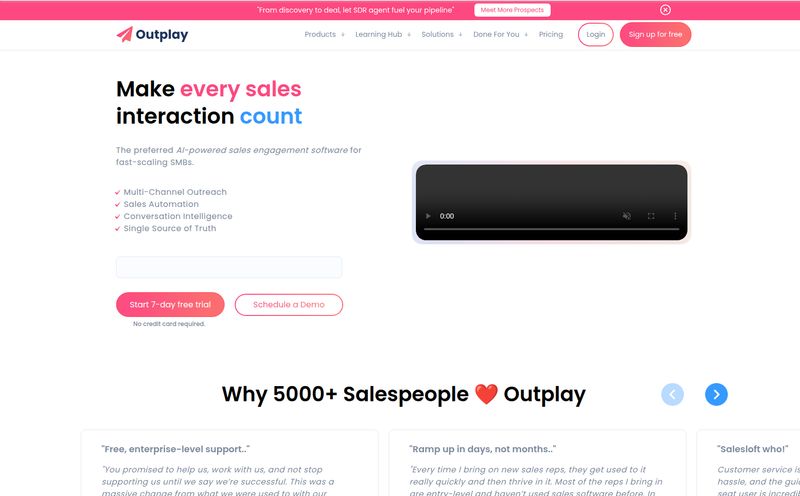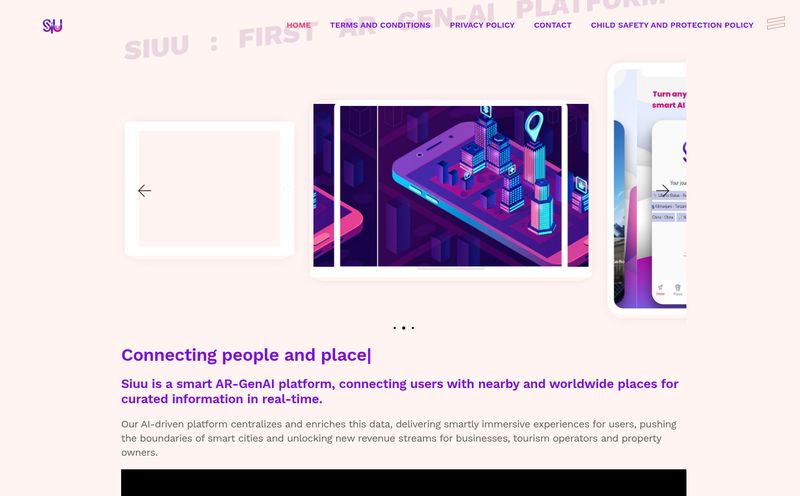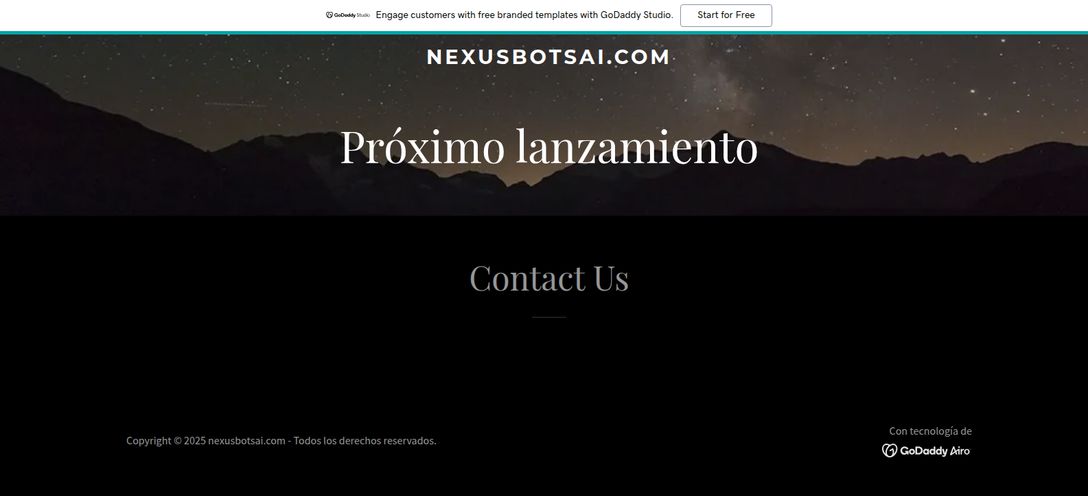I’ve been in the SEO and traffic game for years, and I’ve seen trends come and go. Remember the great chatbot craze of the late 2010s? Suddenly, every website had to have a little pop-up window in the corner, ready to answer your every question. Most of them were… well, let’s just say they weren’t exactly passing the Turing test. But the promise was, and still is, incredibly alluring: seamless, 24/7 customer engagement.
Every so often, I stumble across a platform from that era that catches my eye. Today, that platform is Botjet. Billed as a “Conversational AI Built for business,” it promises to help companies drive deeper engagement. So, I put on my digital archaeologist hat to see if it’s a hidden gem or a relic of a bygone era. What I found was... interesting.
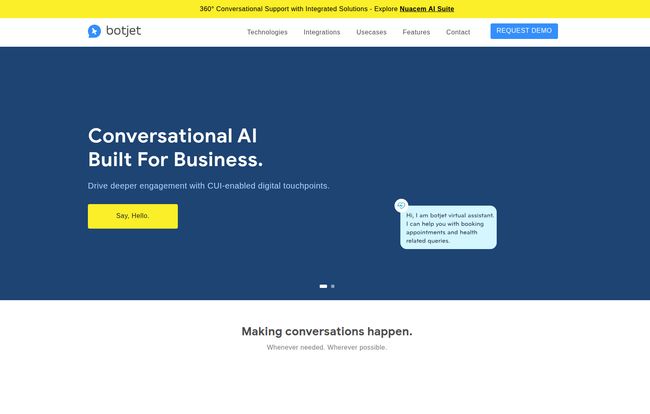
Visit Botjet
So, What's the Deal with Botjet?
On the surface, Botjet presents itself as a robust platform for building sophisticated chatbot solutions. It's not just for making simple, scripted bots that answer “What are your hours?” It’s designed to be the foundation for complex conversational user interfaces (CUIs) that can handle more human-like dialogue. The whole idea is to make adopting this kind of tech simple and, they claim, affordable. It sounds great, right? A powerful tool that doesn’t require a team of MIT PhDs to get running.
The company behind it, Npacem.AI, seems to have positioned Botjet as an all-in-one toolkit for businesses wanting to get serious about AI-driven conversations.
The Tech Stack: What’s Under the Hood?
Botjet's homepage lays out its core technologies pretty clearly. It’s the standard set of ingredients you’d expect for a serious conversational AI platform, but it’s always good to see the fundamentals covered.
The Conversation Engine: The Brains of the Operation
This is the heart of any chatbot. Botjet’s engine is designed to analyze complex sentences and understand the user's intent, not just pick out keywords. Think of it as the difference between a bot that hears “weather today” and one that understands, “What’s the weather going to be like later this afternoon? I’m thinking of going for a walk.” It’s about grasping context, which has always been the holy grail for chatbot developers.
Deep Learning, Speech Recognition and Synthesis
Here’s where it gets a little more futuristic. Botjet talks about using state-of-the-art neural networks to power its deep learning models. This is what allows a bot to learn and improve over time, getting smarter with each interaction. It’s the secret sauce that separates a truly “smart” assistant from a clunky phone menu.
They also bundle in speech recognition (voice-to-text) and speech synthesis (text-to-voice). This is crucial for building voice-activated assistants—think Alexa or Google Assistant, but for your own brand. Having this native to the platform is a big plus, as it means you don't have to bolt on a third-party service to give your bot a voice. It’s all part of creating a more natural, human-like flow for both text and voice chats.
Integrations for a Connected World
A chatbot that lives in a vacuum is pretty useless. Botjet claims to have an integration suite to help you deploy your bot wherever your users are—on your website, in your app, on messaging platforms etc. This is table stakes for any serious platform today. You need to meet your customers where they are, and robust integrations are the only way to do that.
The Good, The Bad, and The... Missing?
Alright, let’s get down to the nitty-gritty. Every tool has its highs and lows, and my look at Botjet was a bit of a rollercoaster.
What I Like About the Botjet Promise
The potential here is obvious. A full suite of tools, from the core conversation engine to speech capabilities, all in one place. That’s compelling. For a business that wants to build a truly custom conversational experience, having these building blocks ready to go is a huge advantage. The focus on making adoption “simple, lasting, and affordable” is music to the ears of any project manager or CTO. It speaks to a real-world pain point: these projects can get complicated and expensive, fast.
Where Things Get a Little Weird
Here's where my investigation took a turn. As I clicked around the website, trying to find use cases or more detailed specs, I started hitting dead ends. Specifically, a big, fat 404 Page Not Found error. The “Explore Usecases” button leads nowhere. Oof. That’s never a good sign.
Then I scrolled to the bottom of the page and saw it: “© 2018 Npacem.AI.”
Two-thousand-and-eighteen. In the tech world, that’s an eternity ago. It makes the entire website feel like a digital time capsule. Its a bit of a ghost town. All the lights are on, the marketing copy is polished, but it feels like nobody's been home for a while. This lack of recent activity is a major red flag for anyone considering investing time or money into a platform.
The All-Important Question: What Does Botjet Cost?
This is probably the biggest question for any business, and unfortunately, Botjet provides zero answers. There is no pricing page. No mention of tiers, packages, or even a hint of a pricing model. You’re prompted to “Get in touch” or “Say, Hello,” which usually signals one of two things:
- It’s a high-ticket, enterprise-level solution with custom pricing based on your needs.
- The platform isn't actively onboarding new customers through the website.
Given the 2018 copyright and broken links, I’m leaning towards the latter. In my experience, a lack of transparent pricing can be frustrating. I'm a big believer in showing at least a starting price to help potential customers qualify themselves. Hiding it completely often makes smaller businesses feel like they need not apply.
Who Is (or Was) Botjet For?
Based on the technical language and the feature set, Botjet was clearly aimed at businesses and developers who wanted to move beyond basic, off-the-shelf chatbots. We're talking about companies in sectors like finance, retail, or healthcare that need to automate complex workflows and handle sensitive, nuanced conversations. This isn’t a tool for a small blogger to add a simple FAQ bot to their site; it’s an engine for building something much more significant.
Frequently Asked Questions about Botjet
Let's try to clear up a few things.
What is Botjet in simple terms?
Botjet is a software platform that provides the tools to build, deploy, and manage advanced chatbots and virtual assistants for businesses. It includes features like a conversation engine, speech recognition, and deep learning.
What are Botjet's main features?
The key features highlighted are its Conversation Engine for understanding natural language, Deep Learning for smarter responses, Speech Recognition and Synthesis for voice capabilities, and an Integration suite to connect with other applications.
Is Botjet still an active platform in 2024?
This is the tough question. Evidence like the website's 2018 copyright date and broken links (404 errors) strongly suggests the platform may no longer be actively developed or promoted. While the core website is online, its state of disrepair is a cause for concern.
How much does Botjet cost?
There is no pricing information available on the Botjet website. You would have to contact the company directly, but it's unclear if you would receive a response given the site's apparent age.
What are some good alternatives to Botjet?
If you're looking for an active and well-supported conversational AI platform, you have many great options today. Check out Google's Dialogflow, Microsoft Azure Bot Service, or open-source solutions like Rasa. These platforms are continuously updated and have large communities and clear documentation.
Final Thoughts: A Promising Idea Lost in Time?
So, what’s my final take on Botjet? I see it as the chatbot equivalent of a concept car at an auto show. It looks sleek, it’s full of promising technology, and it paints a picture of a fantastic future. The feature set—a powerful conversation engine, deep learning, integrated speech—is exactly what a modern platform needs.
However, the evidence suggests that the project may have stalled. The outdated site and broken links make it impossible to recommend for any new project today. It serves as a great reminder of just how fast the tech industry moves. A cutting-edge platform from 2018 can become a digital artifact in just a few short years.
While you probably shouldn’t build your next business on Botjet, it stands as a snapshot of a great idea. The dream of simple, affordable and powerful conversational AI is still very much alive, it just seems to be living on other, more modern platforms.
Reference and Sources
- Botjet Official Website
- Google Dialogflow (A recommended alternative)
